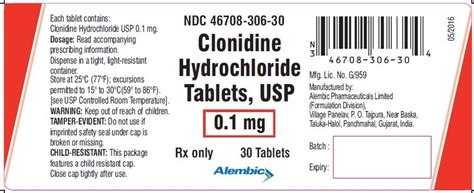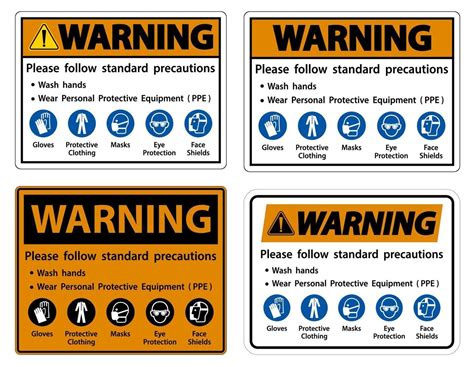Intro
Discover what Clonidine is, its uses, and side effects. Learn about this medication, a centrally acting alpha-2 adrenergic agonist, used to treat hypertension, ADHD, and anxiety disorders, with information on dosage, interactions, and warnings.
Clonidine is a medication that has been widely used for several decades to treat various medical conditions, including high blood pressure, attention deficit hyperactivity disorder (ADHD), and certain pain disorders. It is a type of alpha-2 adrenergic agonist, which means it works by stimulating certain receptors in the brain to produce a calming effect on the body. In this article, we will delve into the world of clonidine, exploring its benefits, working mechanisms, and potential side effects, as well as its various applications in the medical field.
Clonidine has been shown to be effective in reducing blood pressure, heart rate, and symptoms of anxiety and ADHD. It is often prescribed to patients who have not responded well to other treatments or who have certain medical conditions that make it difficult to take other medications. The medication is available in various forms, including tablets, patches, and injections, making it convenient for patients to take as directed by their healthcare provider. With its long history of use and well-established safety profile, clonidine has become a staple in the treatment of several medical conditions.
The importance of clonidine lies in its ability to provide relief to patients who are suffering from debilitating symptoms. For example, patients with high blood pressure may experience headaches, dizziness, and shortness of breath, which can significantly impact their quality of life. By taking clonidine, these patients can experience a reduction in their blood pressure, which can help to alleviate these symptoms and reduce the risk of complications such as heart disease and stroke. Similarly, patients with ADHD may experience improved focus and attention, allowing them to perform better in school and at work. With its wide range of applications and proven efficacy, clonidine has become a valuable tool in the medical field.
What is Clonidine Used For?

- High blood pressure: Clonidine is used to reduce blood pressure in patients who have hypertension. It works by stimulating certain receptors in the brain to produce a calming effect on the body, which helps to lower blood pressure.
- ADHD: Clonidine is used to treat symptoms of ADHD, such as hyperactivity, impulsivity, and inattention. It is often prescribed in combination with other medications, such as stimulants, to help patients focus and pay attention.
- Pain disorders: Clonidine is used to treat certain pain disorders, such as fibromyalgia and neuropathic pain. It works by stimulating certain receptors in the brain to produce a calming effect on the body, which helps to reduce pain.
How Does Clonidine Work?
Clonidine works by stimulating certain receptors in the brain to produce a calming effect on the body. It is a type of alpha-2 adrenergic agonist, which means it works by binding to alpha-2 adrenergic receptors in the brain. This binding process triggers a response that helps to reduce blood pressure, heart rate, and symptoms of anxiety and ADHD. The exact mechanism of action of clonidine is not fully understood, but it is believed to involve the stimulation of certain neurotransmitters, such as norepinephrine and serotonin, which play a role in regulating mood and attention.Benefits of Clonidine

- Reduced blood pressure: Clonidine is effective in reducing blood pressure in patients with hypertension. This can help to reduce the risk of complications such as heart disease and stroke.
- Improved symptoms of ADHD: Clonidine is effective in reducing symptoms of ADHD, such as hyperactivity, impulsivity, and inattention. This can help patients to focus and pay attention, which can improve their performance in school and at work.
- Reduced pain: Clonidine is effective in reducing pain in patients with certain pain disorders, such as fibromyalgia and neuropathic pain. This can help to improve patients' quality of life and reduce their need for other pain medications.
- Convenient dosing: Clonidine is available in various forms, including tablets, patches, and injections, making it convenient for patients to take as directed by their healthcare provider.
Side Effects of Clonidine
Like all medications, clonidine can cause side effects in some patients. Some of the common side effects of clonidine include:- Drowsiness: Clonidine can cause drowsiness, which can be a problem for patients who need to be alert and focused during the day.
- Dry mouth: Clonidine can cause dry mouth, which can be uncomfortable and increase the risk of tooth decay.
- Constipation: Clonidine can cause constipation, which can be uncomfortable and require treatment with laxatives or other medications.
- Headache: Clonidine can cause headache, which can be a problem for patients who are prone to headaches.
How to Take Clonidine

- Take clonidine at the same time every day to help establish a routine and improve adherence.
- Swallow clonidine tablets whole with water, and do not crush or chew them.
- Apply clonidine patches to a clean, dry area of skin, and replace them as directed by the manufacturer.
- Inject clonidine as directed by a healthcare provider, and follow proper injection techniques to minimize the risk of complications.
Interactions with Other Medications
Clonidine can interact with other medications, including prescription and over-the-counter medications, as well as herbal supplements and vitamins. Patients should inform their healthcare provider of all medications they are taking, including:- Beta blockers: Clonidine can interact with beta blockers, which can increase the risk of bradycardia (slow heart rate) and hypotension (low blood pressure).
- Calcium channel blockers: Clonidine can interact with calcium channel blockers, which can increase the risk of bradycardia and hypotension.
- Benzodiazepines: Clonidine can interact with benzodiazepines, which can increase the risk of sedation and respiratory depression.
Precautions and Warnings

- Pregnancy: Clonidine should be used during pregnancy only if the potential benefit justifies the potential risk to the fetus.
- Breastfeeding: Clonidine should be used with caution in breastfeeding women, as it can pass into breast milk and cause side effects in the infant.
- Children: Clonidine should be used with caution in children, as it can cause side effects such as drowsiness and dry mouth.
- Elderly: Clonidine should be used with caution in elderly patients, as it can cause side effects such as drowsiness and hypotension.
Overdose and Withdrawal
Clonidine can cause overdose and withdrawal symptoms in some patients, including:- Overdose: Symptoms of overdose may include bradycardia, hypotension, and respiratory depression. Patients who experience these symptoms should seek medical attention immediately.
- Withdrawal: Clonidine can cause withdrawal symptoms, such as rebound hypertension, when it is stopped abruptly. Patients should taper off clonidine gradually under the supervision of a healthcare provider to minimize the risk of withdrawal symptoms.
Conclusion and Final Thoughts

We encourage readers to share their experiences and thoughts on clonidine in the comments section below. Have you or a loved one taken clonidine for a medical condition? What were your experiences with the medication? Do you have any questions or concerns about clonidine that you would like to discuss? We look forward to hearing from you and engaging in a productive conversation about this important topic.
What is clonidine used for?
+Clonidine is used to treat various medical conditions, including high blood pressure, ADHD, and certain pain disorders.
How does clonidine work?
+Clonidine works by stimulating certain receptors in the brain to produce a calming effect on the body, which helps to reduce blood pressure, heart rate, and symptoms of anxiety and ADHD.
What are the side effects of clonidine?
+Clonidine can cause side effects such as drowsiness, dry mouth, constipation, and headache. Patients should inform their healthcare provider of any side effects they experience.
Can clonidine be used in children?
+Clonidine should be used with caution in children, as it can cause side effects such as drowsiness and dry mouth. Patients should consult their healthcare provider before giving clonidine to a child.
Can clonidine be used during pregnancy?
+Clonidine should be used during pregnancy only if the potential benefit justifies the potential risk to the fetus. Patients should consult their healthcare provider before taking clonidine during pregnancy.
